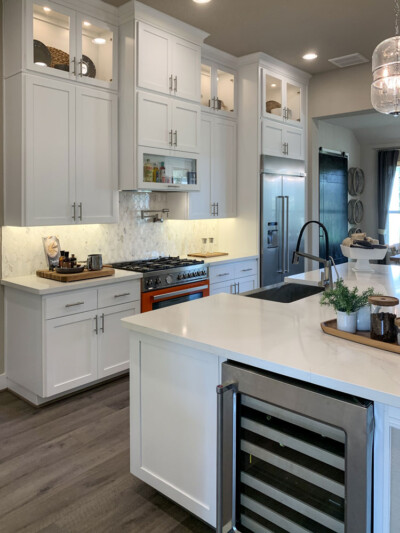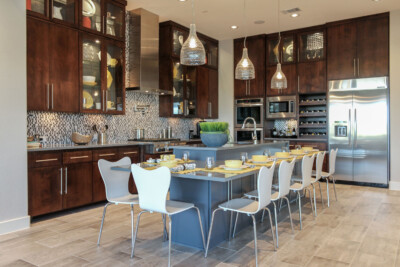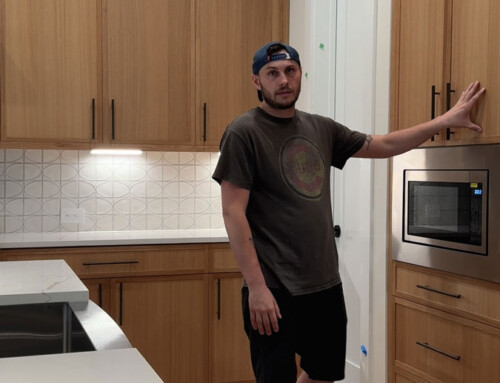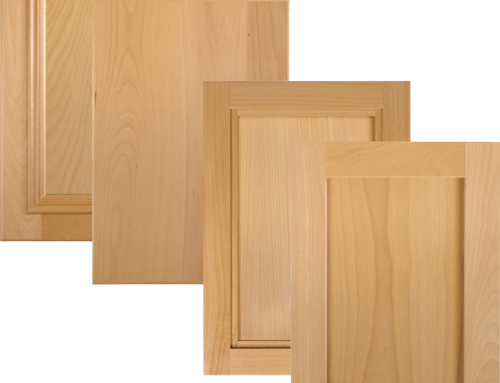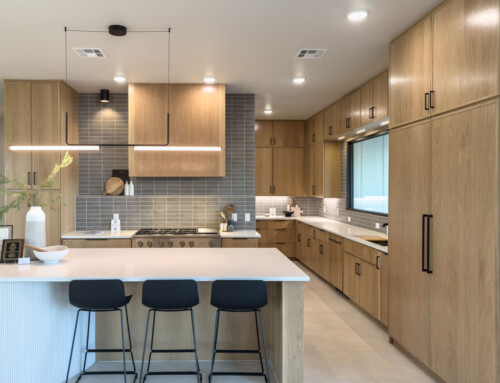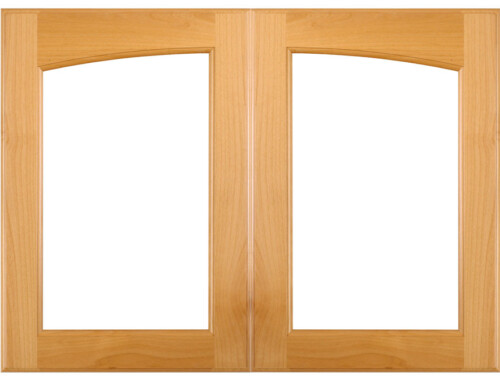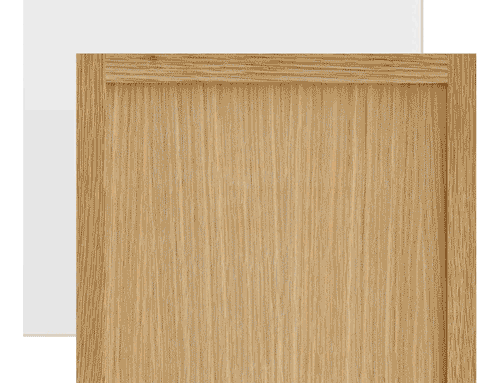Are kitchen cabinet trends cyclical and if so, how can you create cabinets with timeless appeal?
The short answer is yes, there are definite cycles in cabinet trends, just like fashion. However you can create spaces that won’t look dated in a decade if you look at what has remained popular historically. A recent look back at kitchen cabinet photos, decade by decade through the past 100 years, revealed which cabinet styles and color palates have timeless appeal, and which have never returned to the forefront of design trends. Several colors and styles have proven themselves timeless in their ability to create lasting appeal.
Which Kitchen Trends Stand the Test of Time?
Organization tools are timeless, from Hoosier Cabinets also known as the “kitchen piano” from the early 1900s that placed everything “at her fingers ends” according to company literature, to the scores of item-specific drawer and cabinet inserts we have today. Maximizing space and keeping everything near the area where it will be used will always be in vogue. Even very small spaces can be well-designed for maximum ability to move in and out of the space, and organization accessories create lasting appeal and value.
Poorly designed workflow and cramped, unorganized spaces are always out. These were design flaws of the past. They are not likely to return, and most designers know the pitfalls to avoid, such as obstructions to traffic flow, insufficient space to move around appliances when they are opened, etc. Make sure you know the basic rules of good kitchen design so if you are breaking them, you are making a good trade off.
Certain colors when used in moderation have always been tasteful. I found examples of red and various shades of blue, turquoise and yellow in advertised kitchens from every decade. These colors are especially timeless when used as solid color accents instead of saturating the whole room with the color. If you want to use a trendy pattern that could date a room, use it in wallpaper, paint or accessories that can be changed inexpensively.
White, shaker-style kitchen cabinets are truly timeless. They create a great canvas and starting point, and from there you can use color on the walls, countertops, dishes, towels and accessories to bring life and fun to the room, or you can pair them with wood countertops and floors and neutral colors to create a soothing natural look.
Open shelving and glass cabinet door inserts in upper cabinets have been on-trend since the early 1900s, and as long as you can keep the contents somewhat organized, they are a great way to add a pop of color to the kitchen in a subtle way and keep frequently used items within easy reach.
High-quality, natural wood with straight lines has always been tasteful. Think Frank Lloyd Wright. Rift white oak is one of my favorite materials due to its strength, dent resistance, neutral color and the natural beauty of the wood grain. Stains and dyes can date wood. Think of the dated, dark-stained wood of the 70’s and 80s and the orange-red hued oak of the 90’s.
Kitchen cabinet trends are cyclical, and while the avocado green laminate countertops, harvest gold appliances and metallic wallpaper of the 70s may never come back into vogue, if a cabinet is well constructed, it can be timeless.
Here’s a look at kitchen cabinet and cabinet door trends decade by decade:
1920s – All white kitchens were predominant with wood counter tops and many kitchens had open shelves or glass inserts on the upper cabinets and a small work table in the center of the kitchen.
1930s–1940s – Bright colors, especially mint-green and yellow enter the kitchen to bring cheer to depression-era families who could afford a new kitchen. Cabinets painted white are still the norm. The ice-box was introduced allowing homeowners to store more perishable items.
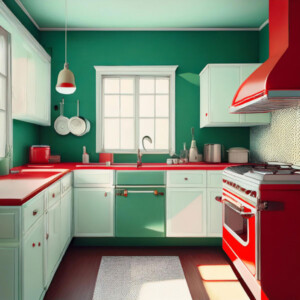
1950s-1960s – Big changes in the kitchen with bold colors like red and kelly green on the walls, counter tops, appliances and on the cabinets themselves, as well as floral wallpaper. More daring kitchen design, double wall ovens, and the u-shaped kitchen with work triangle becomes main stream. The kitchen island was introduced.
1970s – Color became more subdued with avocado green, pumpkin orange and harvest gold trending in appliances, counter tops and kitchen accessories. Harvest hued mushrooms became a popular decoration on wallpaper, appliances and accessories. Painted cabinets took a backseat to natural or stained wood cabinets. Door styles trended to slab, hollow core construction with an 1/8” plywood back panel, sometimes with a design cut out of the cabinet door corners or embossed onto the door.
1980s – Flat panel wood cabinet doors with arched top rails and sometimes arched top and bottom rails became popular. Dark vs light: Dark cabinets with white countertops and dark grout lines were very popular, as were clean, bright white kitchens. Due to newly popular cooking shows on TV, homeowners started showcasing their pots and pans, cookbooks and wine collections in the open. Kitchen ventilation became much better, allowing the kitchen to become more open to the rest of the home.
1990s – Kitchens got huge and became a focal point of the home. Professional quality appliances became the new trophy as did granite counter tops and high-end cabinets with raised panels. Neutral colors with light, maple cabinets and white cabinets were popular.
2000s to present – Kitchen sizes begin to scale back slightly as wasteful space is disparaged and organization accessories and thoughtful space planning become the new focus and the challenge of the day. Professional-grade appliances and solid surfaces are still on the top of the wish list, but granite is starting to loose favor to lower-maintenance, high-end manufactured solid surfaces. Simplified design, without clutter and excess detail, and a focus on horizontal lines in wood grain direction and hardware are trending.
There are also many regional cabinet design trends influenced by migration patterns, material availability and economic factors. Let us know what trends you have seen in your career or your geographic area. We look forward to hearing from you and seeing your photos!
TaylorCraft Cabinet Door Company


